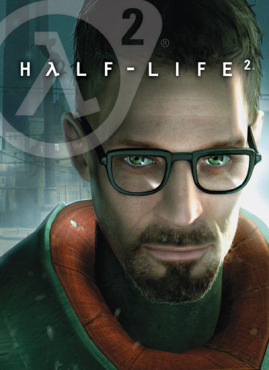
Half-Life 2 is a 2004 first-person shooter (FPS) game developed and published by Valve Corporation. It was published for Windows on Valve's digital distribution service, Steam. Like the original Half-Life (1998), Half-Life 2 combines shooting, puzzles, and storytelling, and adds new features such as vehicles and physics-based gameplay. The player controls Gordon Freeman, who joins a resistance to liberate Earth from the Combine, an interplanetary alien empire.

Simulated racing or racing simulation, commonly known as simply sim racing, are the collective terms for racing game software that attempts to accurately simulate auto racing, complete with real-world variables such as fuel usage, damage, tire wear and grip, and suspension settings. To be competitive in sim racing, a driver must understand all aspects of car handling that make real-world racing so difficult, such as threshold braking, how to maintain control of a car as the tires lose traction, and how properly to enter and exit a turn without sacrificing speed. It is this level of difficulty that distinguishes sim racing from arcade racing-style driving games where real-world variables are taken out of the equation and the principal objective is to create a sense of speed as opposed to a sense of realism.

Rigs of Rods (RoR) is a free and open source vehicle-simulation game which uses soft-body physics to simulate the motion destruction and deformation of vehicles. The game uses a soft-body physics engine to simulate a network of interconnected nodes and gives the ability to simulate deformable objects. With this engine, vehicles and their loads flex and deform as stresses are applied. Crashing into walls or terrain can permanently deform a vehicle until it is reset; however, not all vehicles in the game have flexible bodies.

Fastest 1 (ファステスト・ワン) is a Sega Mega Drive racing game video game released in 1991 exclusively in Japan. During the release of this video game, other Formula One video games like Super Monaco GP had caused a general increase of demand for Formula One video games. While most of those games were poor simulations of the races, Fastest One proved to be the most realistic of the era.
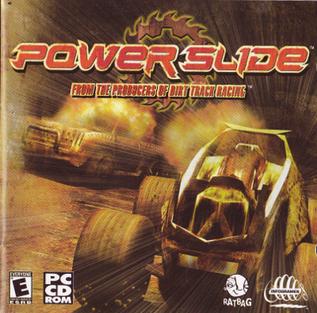
Powerslide is a post-apocalyptic Microsoft Windows racing game by Australian developer Ratbag Games. It was released in Australia, United States and Europe in 1998. Powerslide was praised for its graphics and AI in particular. A sequel, Powerslide: Slipstream, was in development as of 2004, but Ratbag couldn't find a suitable publisher, and shortly after the company was shut down. Powerslide was re-released on GOG.com in 2012.

Garry's Mod is a 2006 sandbox game developed by Facepunch Studios and published by Valve. The base game mode of Garry's Mod has no set objectives and provides the player with a world in which to freely manipulate objects. Other game modes, notably Trouble in Terrorist Town and Prop Hunt, are created by other developers as mods and are installed separately, by means such as the Steam Workshop. Garry's Mod was created by Garry Newman as a mod for Valve's Source game engine and released in December 2004, before being expanded into a standalone release that was published by Valve in November 2006. Ports of the original Windows version for Mac OS X and Linux followed in September 2010 and June 2013, respectively. As of September 2021, Garry's Mod has sold more than 20 million copies. A successor, Sandbox, has been in development since 2015.

Live for Speed (LFS) is a racing simulator developed by a three-person team comprising Scawen Roberts, Eric Bailey, and Victor van Vlaardingen. The main focus is to provide a realistic racing experience for the online multiplayer game and to allow single player races against AI cars. Users can set personal bests which can then be uploaded to LFSWorld in hotlap mode, and take driving lessons in 'training' mode.

rFactor 2 is a computer racing simulator developed by Image Space Incorporated and released for Windows in 2012. Like its predecessor rFactor, rFactor2 is designed to be modified and used by professional racing teams for driver training and race car development. Much of its source code is derived from rFactor Pro, which is also used by professional racers and most of the Formula One teams and NASCAR manufacturers.

Outerra is a Slovak computer software company best known for its middleware 3D planetary graphics engine, called Outerra engine, in development since 2008. The engine renders high-quality terrain, terrain texturing, flora and water flow normal maps using relatively sparse and highly compressed data through fractal processing and other types of procedural generation. The game Anteworld uses real world data to create a virtual replica of planet Earth.

Kerbal Space Program (KSP) is a space flight simulation video game developed by Mexican studio Squad for Linux, macOS, Windows, PlayStation 4, PlayStation 5, Xbox Series X/S and Xbox One. In the game, players direct a space program, staffed and crewed by green humanoid aliens known as "Kerbals". The game features a pseudorealistic orbital physics engine, allowing for various real-life orbital maneuvers such as Hohmann transfer orbits and orbital rendezvous.
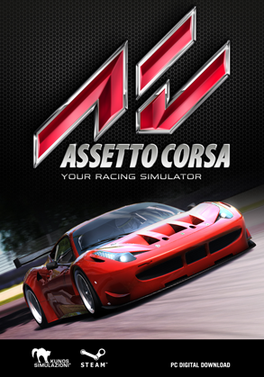
Assetto Corsa is a sim racing video game developed by the Italian video game developer Kunos Simulazioni. It is designed with an emphasis on a realistic racing experience with support for extensive customization and moddability. The game was first released through the Steam Early Access program on 8 November 2013, and officially left Early Access as final release version on 19 December 2014.

Wreckfest is a racing video game developed by Bugbear Entertainment and published by THQ Nordic. Wreckfest is described as the spiritual successor to the FlatOut series and a cross between FlatOut, Destruction Derby and cult 1989 PC racer Street Rod. A notable feature of the game engine is the use of soft-body damage modelling, which enables location-based damage that affects the driving dynamics of vehicles in a realistic fashion.
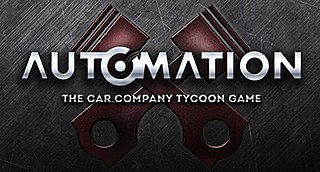
Automation is a simulation video game developed by Camshaft Software for Microsoft Windows that allows the player to create and run a virtual car company and design vehicles to sell. It is currently available via Steam.

Dirt Rally is a racing simulation video game developed and published by Codemasters for Windows. A Steam Early Access version of the game was released on 27 April 2015, and the full version was released on 7 December. PlayStation 4, Xbox One and physical PC DVD versions were released on 5 April 2016. The Linux and macOS versions, developed by Feral Interactive, were released in 2017. A sequel, Dirt Rally 2.0, was released in February 2019.

SimplePlanes is a simulation video game developed and published by the American indie studio Jundroo LLC. SimplePlanes followed the release of SimplePhysics and SimpleRockets and preceded Juno: New Origins and SimplePlanes VR. The game was first released on Mac OS X and Microsoft Windows and was ported to iOS and Android later. It was released onto Steam on 17 December 2015 after going through the Steam Greenlight process. The game received mixed reviews from users and video game reviewers, with the main downfalls mentioned the most being the "slippery controls" and the graphical design. However, it is known for its innovative, though sometimes complex, building mechanics. From 2014 until 2023, SimplePlanes has got 12 updates. The latest version, v1.12.200 beta, was released in September 2023.
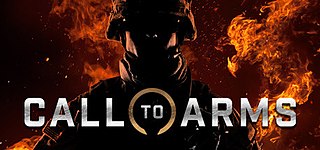
Call to Arms is a real-time tactics and strategy video game developed by German company Digitalmindsoft as the spiritual successor to the Men of War series. The early access version of the game was released on 30 July 2015 to Steam. A stand-alone expansion pack, titled Gates of Hell: Ostfront, was released in 2021.

Asphalt 9: Legends is a 2018 racing game developed by Gameloft Barcelona and published by Gameloft. Released on July 25, 2018, it's the fifteenth major game of Asphalt series. In comparison to previous entries, there are several new and improved features, such as a prestigious car lineup, new control schemes, including the autopilot mode called "TouchDrive", and race modes, and the reimplemented "shockwave nitro" from Asphalt 6: Adrenaline. The graphics are considered significantly improved compared to its 2013 predecessor, Asphalt 8: Airborne.

Teardown is a 2022 sandbox–puzzle game developed and published by Tuxedo Labs. The game revolves around the owner of a financially stricken demolition company, who is caught executing a questionable job and becomes entangled between helping police investigations and taking on further dubious assignments. Teardown features levels made of destructible voxels, and the player follows the campaign through consecutive missions. In most missions, the player must collect or destroy objects connected to a security alarm. The player has unlimited time to prepare and is given upgradable tools, vehicles, and explosives to create a path within the level that allows them to complete the objectives as quickly as possible. A timer starts as soon as the security alarm is triggered, and the player must complete all required objectives and reach a getaway vehicle within sixty seconds, though the alarm can be adjusted from the settings.

Automobilista 2 is a motorsport racing simulator game created by Reiza Studios, under the lead of Renato Simioni. The game was initially released as an Early Access title on March 31, 2020, via Steam, with the official V1.0 release taking place on June 30, 2020. Automobilista 2 features a wide variety of cars and tracks. Its main focus is on Brazilian content, which includes licensed Brazilian racing series such as Stock Car Brazil and Copa Truck. There is also an emphasis on Formula racing cars of many different eras, and includes licensed and generic vehicles. Other racing classes represented in Automobilista 2 include, but are not limited to: Retro touring cars, 1990s American open-wheel cars, GT3 and karts. Automobilista 2 supports VR, triple screen and full motion racing simulator setups.

KartKraft is a karting racing simulator game that emphasizes realistic physics. It was originally created by Australian independent developer Black Delta which in 2021 was acquired by Motorsport Games. After being in Early Access on the Steam store since November 2018, the game was officially released on January 26, 2022.





















